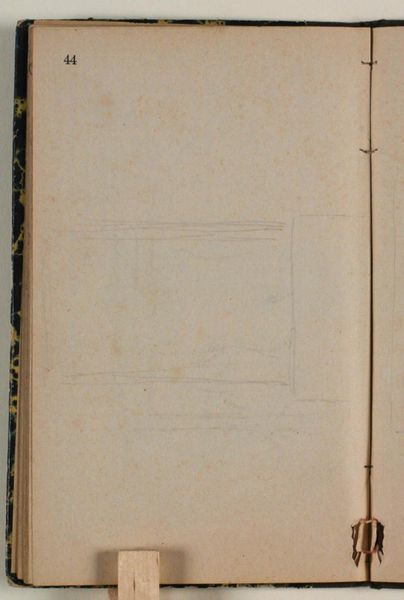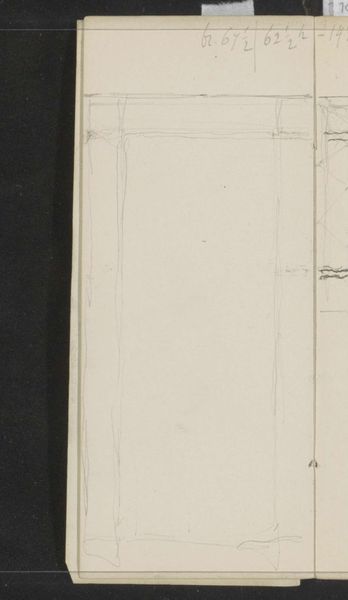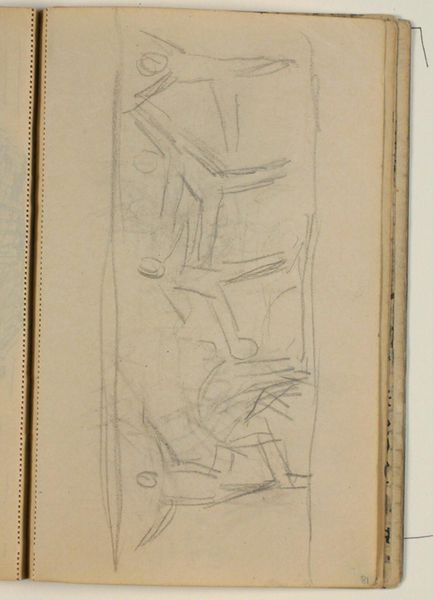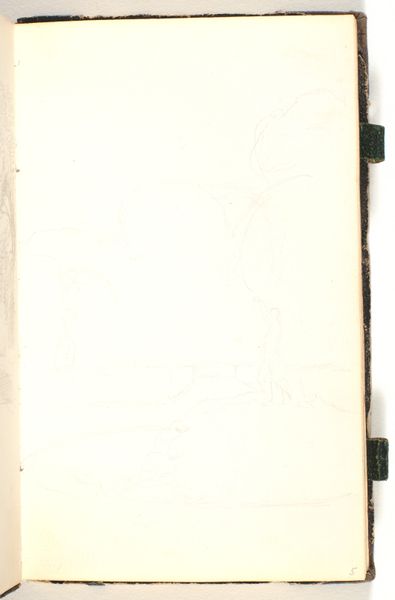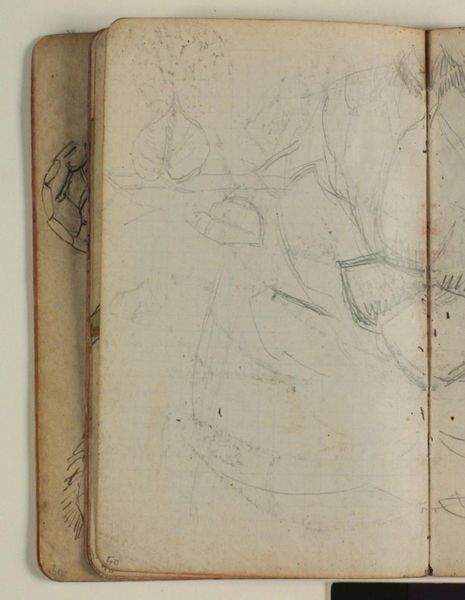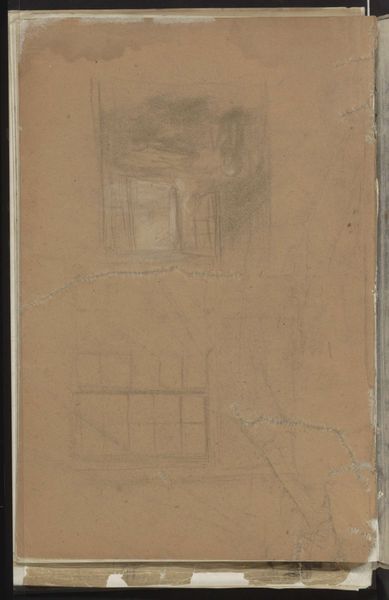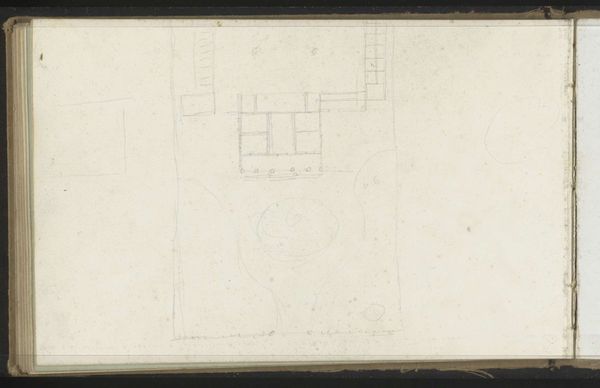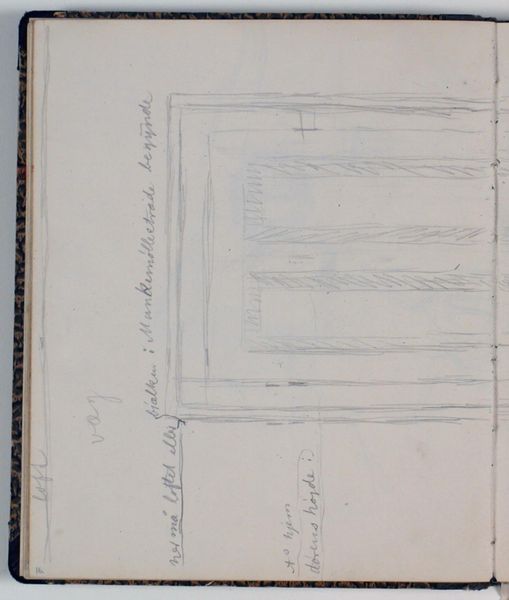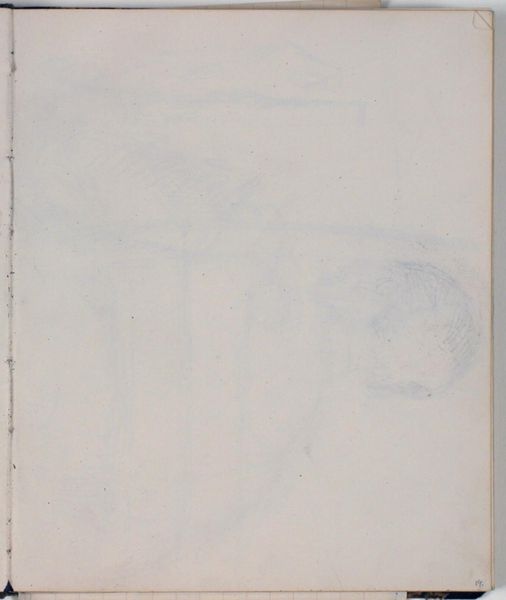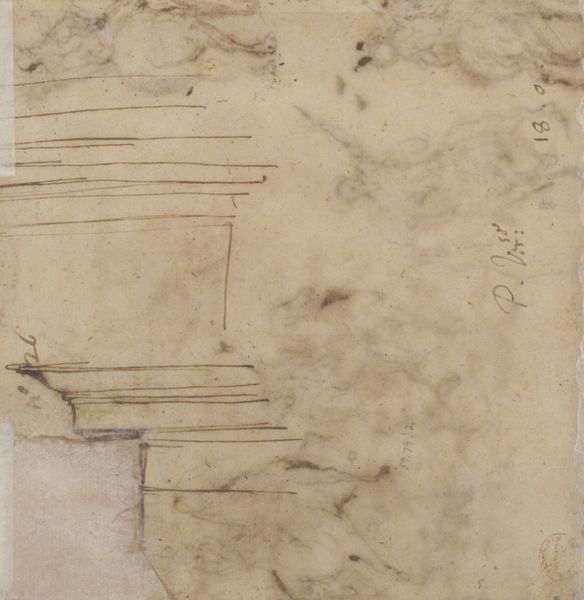
Dimensions: 153 mm (height) x 93 mm (width) (bladmaal)
Curator: Here we have "Skitse til altertavle ? (Hvam kirke)" – a sketch for an altarpiece for Hvam Church – by Niels Larsen Stevns, thought to originate sometime between 1864 and 1941. It's a pencil drawing on paper. Editor: My first impression is of quietude, almost monastic in its simplicity. The composition is fundamentally geometric; rectangles within rectangles creating a contained, meditative space. Curator: Yes, notice how Stevns employs very economical lines. Semiotically, the landscape elements, however rudimentary, are doing a great deal of work here. What meanings can we derive from that spareness? Editor: I think the context is crucial. Stevns was clearly grappling with the commission – what did it mean to represent the sacred in a changing society? Was this a deliberate attempt to break from more ornate, traditional church art? It would be interesting to investigate its connection to the artistic currents within the Danish church at the time. Curator: The sparseness is deliberate; an aesthetic choice in line with contemporaneous movements rejecting academic artifice. The composition creates a rigorous framework of the image- a powerful abstract structure in which horizon lines float- it asks the viewer to invest themselves and their faith, more deeply, in the artwork itself. Editor: I'd wager that the intended audience and their expectations would have dramatically shaped his approach. Consider the local parishioners, their established views on religious art – how receptive would they have been to such an unconventional vision? Curator: These simple horizontals almost approach the sublime. Stevns invites contemplation not through lavish depiction but through structural suggestion and simplicity. Editor: Ultimately, it’s a reminder that the history of art is as much about societal dialogue and institutional influence as it is about individual creativity. The politics of representation and reception are crucial parts of this, even with sketches like these. Curator: Absolutely. Seeing the way in which an artist strips things back allows us to refocus and recalibrate our own understanding of the fundamental components of art and experience itself. Editor: Precisely. A look at the social dimensions gives the historical picture. Both approaches make art experiences better understood.
Comments
No comments
Be the first to comment and join the conversation on the ultimate creative platform.
